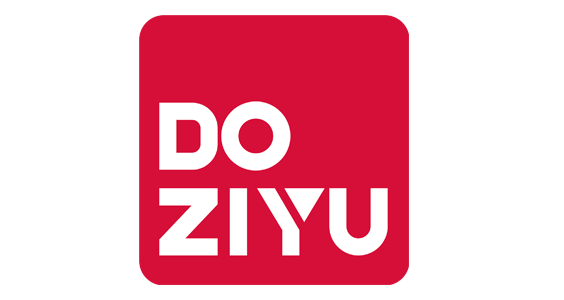ຫຼັກການການອອກແບບທີ່ເໝາະສົມ ແລະ ລວມເອົາທຸກຄົນໃນລວງສູງຂອງເຄື່ອງກັດຊະປອນ
ວິທີທີ່ລວງສູງຂອງເຄື່ອງກັດຊະປອນມີຜົນກະທົບຕໍ່ການມີສ່ວນຮ່ວມຂອງຜູ້ໃຊ້
ຄວາມສູງທີ່ເໝາະສົມສໍາລັບເຄື່ອງກະຊະປອນ ມີຄວາມແຕກຕ່າງຫຼາຍໃນການທີ່ຄົນພວກເຂົາມາກັບເຄື່ອງເຫຼົ່ານັ້ນ. ຜູ້ໃຫຍ່ສ່ວນຫຼາຍເຊື່ອວ່າເຄື່ອງທີ່ມີຄວາມສູງປະມານ 40 ຫາ 45 ນິ້ວ (ປະມານ 102 ຫາ 114 ຊັນຕີແມັດ) ງ່າຍຕໍ່ການໃຊ້ງານຫຼາຍຂຶ້ນ ເນື່ອງຈາກມັນຢູ່ໃນລະດັບຄວາມສູງຂອງເຄົາເຕີ. ບໍ່ຈໍາເປັນຕ້ອງກົ້ມລົງ ຫຼື ຍື່ນຕົວຢ່າງບໍ່ສະດວກເພື່ອຈັບເອົາຖົງນ້ອຍໆເຫຼົ່ານັ້ນ. ຕາມບາງການຄົ້ນຄວ້າຈາກສະມາຄົມປັດໃຈມະນຸດ (Human Factors Society) ໃນປີ 2023, ຈຸດທີ່ດີທີ່ສຸດນີ້ ຈະຊ່ວຍຫຼຸດຄວາມບໍ່ສະບິດສະບາຍຂອງບ່າ ແລະ ຂໍ້ມື ໄດ້ປະມານ 28% ເມື່ອທຽບກັບເຄື່ອງທີ່ຖືກຕິດຕັ້ງສູງ ຫຼື ຕ່ຳເກີນໄປ. ສໍາລັບເດັກນ້ອຍທີ່ນ້ອຍກ່ວາສິບສອງປີ, ຜູ້ປົກຄອງມັກຕິດຕັ້ງເຄື່ອງເຫຼົ່ານີ້ໃກ້ກັບພື້ນດິນຫຼາຍຂຶ້ນ, ຢູ່ໃນໄລຍະ 30 ຫາ 35 ນິ້ວ (ປະມານ 76 ຫາ 89 ຊັນຕີແມັດ). ສິ່ງນີ້ຊ່ວຍໃຫ້ເດັກນ້ອຍເຫັນສິ່ງທີ່ເກີດຂຶ້ນໃນໜ້າຈໍໄດ້ດີຂຶ້ນ ແລະ ສາມາດເຂົ້າເຖິງກ້ານຈັບໄດ້ໂດຍບໍ່ຕ້ອງຢືນຢັນຕີນ.
ຫຼັກການ Ergonomic ໃນການອອກແບບເຄື່ອງກະຊະ ແລະ ປະສົບການຜູ້ໃຊ້ງານ
ເຄື່ອງກັດຈາມື້ນີ້ມາພ້ອມກັບການປັບປຸງດ້ານສີໂຣການິກ (Ergonomic) ທີ່ສຳຄັນຫຼາຍຢ່າງເຊິ່ງຖືກອອກແບບມາເພື່ອໃຫ້ໃຊ້ງ່າຍຂຶ້ນໃນໄລຍະເວລາຍາວ. ກ່ອນອື່ນໝົດ, ຮຸ່ນສ່ວນຫຼາຍມີຖານເຄື່ອງທີ່ສາມາດປັບໄດ້ຕາມຄວາມແຕກຕ່າງຂອງພື້ນໂດຍອີງໃສ່ແຕ່ລະສະຖານທີ່. ຈໍແລະຈໍທີ່ຖືກເອີ້ນວ່າແມ່ນຖືກເອີ້ນມຸມໄປຂ້າງໜ້າປະມານ 15 ອົງສາ, ສິ່ງນີ້ຊ່ວຍປ້ອງກັນບໍ່ໃຫ້ຄົນເຈັບຄໍເວລາເບິ່ງ. ສຳລັບການຈັບກຸມທີ່ບໍ່ຕ້ອງໃຊ້ແຮງຫຼາຍເທົ່າໃດ – ທົ່ວໄປແລ້ວຕ້ອງໃຊ້ແຮງດັນໜ້ອຍກ່ວາຫ້າປອນເພື່ອໃຫ້ເຄື່ອງເຮັດວຽກ. ການປັບປຸງເຫຼົ່ານີ້ມີຜົນກະທົບຫຼາຍໃນສະຖານທີ່ທີ່ມີຄວາມຍຸ່ງຍາກບ່ອນທີ່ຜູ້ປະຕິບັດງານອາດຈະເມື່ອຍຫຼັງຈາກເຮັດວຽກຫຼາຍຊົ່ວໂມງ, ຕາມການສັງເກດໃນພື້ນທີ່ບາງຄັ້ງລະບຸວ່າໄດ້ຫຼຸດລົງເຖິງ 40%. ນອກຈາກນັ້ນ, ຜູ້ຜະລິດຍັງບໍ່ຈຳເປັນຕ້ອງໃຊ້ເງິນເພີ່ມເຕີມເພື່ອປະຕິບັດການປັບປຸງເຫຼົ່ານີ້. ການຄົ້ນຄວ້າຈາກມະຫາວິທະຍາໄລໂຕກຽວໃນປີ 2022 ກໍ່ໄດ້ເຜີຍໃຫ້ເຫັນສິ່ງທີ່ໜ້າສົນໃຈອີກຢ່າງໜຶ່ງ: ລູກຄ້າລາຍງານວ່າພວກເຂົາມີຄວາມສຸກຫຼາຍຂຶ້ນໃນຮຸ່ນທີ່ສາມາດປັບຄວາມສູງໄດ້ເມື່ອທຽບກັບຮຸ່ນເກົ່າທີ່ປັບບໍ່ໄດ້, ຄະແນນຄວາມພໍໃຈເພີ່ມຂຶ້ນຫຼາຍກ່ວາ 40% ໃນບາງກໍລະນີ.
ການບູລະນະການຫຼັກການອອກແບບສາກົນເຂົ້າໃນການວາງແຜນຄວາມສູງຂອງເຄື່ອງ Gashapon
ການອອກແບບສາກົນຕ້ອງຮັບປະກັນຜູ້ໃຊ້ງານທີ່ມີລວມເຖິງເດັກນ້ອຍສູງ 4 ຟຸດ ແລະ ຜູ້ໃຫຍ່ທີ່ສູງ 6'6" ນິ້ວ ແລະ ຜູ້ດຳເນີນງານທີ່ນັ່ງລົດໄຟ້ລ້ຽວ. ຜູ້ຜະລິດຊັ້ນນຳໃນປັດຈຸບັນໄດ້ນຳໃຊ້ມາດຕະຖານເຫຼົ່ານີ້:
| ກຸ່ມຜູ້ໃຊ້ | ຊ່ວງຄວາມສູງທີ່ເໝາະສົມ | ປັດໄຈການອອກແບບທີ່ສຳຄັນ |
|---|---|---|
| ເດັກນ້ອຍ (4–12 ປີ) | 30"–35" (76–89 ຊມ) | ໄລຍະທາງທີ່ເຂົ້າເຖິງໄດ້ 14" |
| ຜູ້ໃຫຍ່ (5'–6') | 40"–45" (102–114 ຊມ) | ການຈັດວາງໜ້າຈໍໃນລະດັບຕາ |
| ຜູ້ໃຊ້ເກົ້າອີ້ລ້ຽວ | 30"–42" (76–107 ຊມ) | 27" ພື້ນທີ່ຫວ່າງຫົນເທິງຢ່າງໜ້ອຍ |
ສູນຄອບຄົວບັນເທີງຂອງປະເທດຍີ່ປຸ່ນລາຍງານວ່າມີຊ່ວງເວລາຫຼິ້ນຍາວຂຶ້ນ 63% ໃນເຂດທີ່ໃຊ້ວິທີການຊັ້ນນີ້. ໃນຂະນະທີ່ການປຽບທຽບລາຄາເຄື່ອງຈັກກາຊະ (gacha) ມັກສະແດງໃຫ້ເຫັນລາຄາເບື້ອງຕົ້ນ, ການອອກແບບທີ່ສາມາດເຂົ້າເຖິງໄດ້ສະແດງໃຫ້ເຫັນລາຍຮັບຕະຫຼອດຊີບສູງຂຶ້ນ 22% ຜ່ານການຂະຫຍາຍກຸ່ມເປົ້າໝາຍ (ລາຍງານອຸດສະຫະກຳບັນເທີງ 2023)
ຄວາມຕ້ອງການດ້ານຄວາມສູງທີ່ມຸ່ງເນື້ອໃສ່ຜູ້ໃຊ້ໃນແຕ່ລະກຸ່ມປະຊາກອນ
ຄວາມມັກດ້ານຄວາມສູງຂອງເດັກນ້ອຍ ແລະ ວັຍລຸ້ນທີ່ໃຊ້ເຄື່ອງກາຊະ (gacha)
ການຄົ້ນຄວ້າສະແດງໃຫ້ເຫັນວ່າເດັກນ້ອຍອາຍຸ 6–14 ປີ ປະມານ 86% ມີການມີສ່ວນຮ່ວມຢ່າງສະດວກທີ່ສຸດກັບເຄື່ອງຈັກກາຊະໂປນ (gashapon) ທີ່ຖືກຕັ້ງໄວ້ໃນລະດັບ 110–140 ຊມ - ຊ່ວງທີ່ເหมາະສົມກັບລະດັບຕາເວລາຢືນຂອງກຸ່ມປະຊາກອນນີ້ (ການສຶກສາດ້ານມະນຸດວິທະຍາຢູໂຣບ 2024). ລະດັບຄວາມສູງນີ້ເຮັດໃຫ້ເບິ່ງເຫັນເມັດເຄື່ອງຫຼິ້ນໄດ້ຊັດເຈນ ໃນຂະນະທີ່ຮັກສາໄລຍະຫ່າງໃນການຍື່ນມືເອົາຢ່າງປອດໄພ, ລົດຜົນກະທົບຈາກການຂໍຄວາມຊ່ວຍເຫຼືອຈາກຜູ້ໃຫຍ່
ຮູບແບບການໃຊ້ງານຂອງຜູ້ໃຫຍ່ ແລະ ຄວາມຕ້ອງການດ້ານພື້ນທີ່ຫວ່າງ
ການມີສ່ວນຮ່ວມຂອງຜູ້ໃຫຍ່ທີ່ດີທີ່ສຸດເກີດຂຶ້ນທີ່ຄວາມສູງ 95–115 ຊມ, ສົມດຸນລະຫວ່າງການວາງຫົວເຂົ່າ (ຄວາມເລິກຢ່າງໜ້ອຍ 45 ຊມ) ກັບການເຂົ້າເຖິງອິນເຕີເຟດຢ່າງສະດວກ. ການຄົ້ນຄວ້າດ້ານສະພາບແວດລ້ອມການເຮັດວຽກຊີ້ໃຫ້ເຫັນວ່າເຂດນີ້ທີ່ເອີ້ນວ່າ "ເຂດຄຳ" ຈະຫຼຸດການຄົດຂອງກະດູກສັນຫຼັງລົງ 40% ເມື່ອທຽບກັບການຕິດຕັ້ງໃນລະດັບຕໍ່າກວ່າ ໃນຂະນະທີ່ສົ່ງເສີມການມີສ່ວນຮ່ວມໃນສັງຄົມໃນບັນດາສະຖານທີ່ລວມກັນ
ສິ່ງທ້າທາຍໃນການເຂົ້າເຖິງສຳລັບຜູ້ໃຊ້ເກົ້າອີ້ລ້ຽວ ແລະ ກຸ່ມຄົນທີ່ມີຄວາມຕ້ອງການພິເສດ
ມີພຽງ 22% ຂອງເຄື່ອງໂຊກເສື່ອງທີ່ເຮັດວຽກໄດ້ເຊິ່ງເໝາະສຳລັບຄົນທີ່ນັ່ງເກົ້າອີ້ລ້ຽວເນື່ອງຈາກເຄື່ອງສ່ວນຫຼາຍບໍ່ໄດ້ຖືກອອກແບບມາໃນລະດັບຄວາມສູງທີ່ 80 ຫາ 95 ຊັນຕີແມັດ ທີ່ຈຳເປັນສຳລັບຜູ້ໃຊ້ງານເກົ້າອີ້ລ້ຽວ. ຢ່າງໃດກໍຕາມ, ຜູ້ຜະລິດກຳລັງເລີ່ມເຂົ້າໃຈເລື່ອງນີ້ຫຼາຍຂຶ້ນ ແລະ ເຄື່ອງລຸ້ນໃໝ່ກໍມີການອອກແບບໜ້າຈໍທີ່ເອີ້ງທາງ 15 ຫາ 30 ອົງສາ, ຊ່ອງຫยอดເງິນທີ່ຍື່ນອອກມາປະມານ 12 ຫາ 15 ຊັນຕີແມັດ ແລະ ປຸ່ມນ້ອຍໆທີ່ຊ່ວຍໃຫ້ຜູ້ຫຼິ້ນຮູ້ສຶກເຖິງການຫຼິ້ນເມື່ອຫຍັບເງິນເຂົ້າໄປ. ເຖິງວ່າການປັບປຸງເຫຼົ່ານີ້ຈະເປັນໄປຕາມຫຼັກການອອກແບບທີ່ເໝາະສຳລັບທຸກຄົນ ແຕ່ກໍຍັງມີຂໍ້ຈຳກັດຢູ່. ການສຶກສາດ້ານສຸຂະລິດ (Ergonomics) ສະແດງໃຫ້ເຫັນວ່າເຄື່ອງປັບປຸງເຫຼົ່ານີ້ມີລາຄາສູງຂຶ້ນປະມານ 18 ຫາ 24% ທຽບກັບເຄື່ອງທົ່ວໄປ ເຊິ່ງອະທິບາຍໄດ້ວ່າເປັນຫຍັງເຈົ້າຂອງຮ້ານເກມຈຶ່ງຍັງໃຊ້ເຄື່ອງເກົ່າເຖິງວ່າຈະມີບັນຫາດ້ານການເຂົ້າເຖິງ.
ການປະດິດສ້າງໃນການອອກແບບເຄື່ອງໂຊກເສື່ອງທີ່ປັບໄດ້ ແລະ ສາມາດປ່ຽນຊິ້ນສ່ວນໄດ້
ແນວໂນ້ມ: ການເພີ່ມຂື້ນຂອງເຄື່ອງໂຊກເສື່ອງທີ່ສາມາດປັບຄວາມສູງ ແລະ ປະເພດ Modular ໃນພື້ນທີ່ສາທາລະນະ
ຫຼາຍພື້ນທີ່ສາທາລະນະເລີ່ມໃຫ້ຄວາມສຳຄັນກັບການອອກແບບເຄື່ອງກະຊວນທີ່ສາມາດປັບປຸງໄດ້ເພື່ອໃຫ້ເໝາະສຳລັບຜູ້ໃຊ້ງານທຸກຄົນ. ຕາມການວິເຄາະຕະຫຼາດໃໝ່ໃນປີ 2024, ມີເຄື່ອງກະຊວນປະມານ 42% ທີ່ຖືກຕິດຕັ້ງໃນສູນການຄ້າມີຄວາມສູງທີ່ສາມາດປັບໄດ້, ເຊິ່ງເພີ່ມຂື້ນຫຼາຍຈາກປີ 2020 ທີ່ມີພຽງ 17%. ບໍລິສັດຜູ້ຜະລິດໃຫຍ່ເລີ່ມນຳໃຊ້ລະບົບທີ່ສາມາດປັບປຸງໄດ້ດ້ວຍຕົ້ນສູງທີ່ສາມາດປັບໄດ້ຈາກ 100 ຫາ 160 ຊັນຕີແມັດ, ລວມທັງຊ່ອງຫยอดເງິນທີ່ສາມາດຫັນໄດ້ ແລະ ກ່ອງທີ່ປຸກຂື້ນມາເມື່ອຕ້ອງການ. ເປັນຫຍັງຈຶ່ງມີການປ່ຽນແປງຫຼາຍເຊັ່ນນີ້? ນັ້ນກໍເນື່ອງຈາກມີກົດລະບຽບດ້ານການເຂົ້າເຖິງໃນ 23 ປະເທດທີ່ກຳນົດວ່າຄົນທຸກຄົນຕ້ອງສາມາດເຂົ້າເຖິງເຄື່ອງໃນທີ່ສາທາລະນະໄດ້ໃນລະດັບຄວາມສູງບໍ່ເກີນ 127 ຊັນຕີແມັດ. ດັ່ງນັ້ນທຸລະກິດຈຶ່ງຕ້ອງປັບປຸງການອອກແບບເພື່ອຕອບສະໜອງຄວາມຕ້ອງການດັ່ງກ່າວ ແລະ ສາມາດໃຊ້ງານໄດ້ດີສຳລັບລູກຄ້າທົ່ວໄປ.
ກໍລະນີສຶກສາ: ການອອກແບບເຄື່ອງກະຊວນໃໝ່ໃນສູນບັນເທີງຄອບຄົວຍີ່ປຸ່ນ
ສະໂມສອນບັນເທີງໃນເມືອງເກີໂຍໄດ້ສະແດງໃຫ້ເຫັນເຖິງປະໂຫຍດໃນການດຳເນີນງານຂອງລະບົບທີ່ສາມາດປັບໄດ້ຫຼັງຈາກຕິດຕັ້ງເຄື່ອງຈັກ 78 ເຄື່ອງໃໝ່. ຂໍ້ມູນຫຼັງຕິດຕັ້ງສະແດງໃຫ້ເຫັນ:
| เมตริก | ຫົວໜ່ວຍມາດຕະຖານ | ຫົວໜ່ວຍທີ່ສາມາດປັບໄດ້ |
|---|---|---|
| ການເຮັດທຸລະກຳຕໍ່ມື້ | 93 | 147 (+58%) |
| ຄວາມຖີ່ຂອງການປ້ອງກັນ | ອາທິດ | ປະຈໍາເດືອນ |
| ຄວາມສັດເສັ້ນຂອງຜູ້ໃຊ້ | 68% | 91% |
ການອອກແບບໃໝ່ໄດ້ກຳຈັດບັນຫາການເຂົ້າເຖິງໄດ້ເຖິງ 80% ໃນຂະນະທີ່ຮັກສາຕົ້ນທຶນໃນລະດັບທຽບເທົ່າກັບລຸ້ນທີ່ມີຄວາມສູງຖາວອນ.
ການວິເຄາະຄວາມຂັດແຍ່ງ: ຄວາມສູງມາດຕະຖານ ເທິບກັບການຕິດຕັ້ງທີ່ສາມາດປັບຕົວໄດ້
ການຖົກຖຽງກັນກ່ຽວກັບການອອກແບບແບບມີຄວາມຍືດຫຍຸ່ນຍັງຄົງດຳເນີນຕໍ່ໄປໃນບັນດາຜູ້ຊ່ຽວຊານພາຍໃນອຸດສະຫະກຳ. ຕາມການສຳຫຼວດຜູ້ປະຕິບັດງານໃນປີ 2023 ທີ່ຜ່ານມາ, ປະມານສອງສ່ວນສາມຂອງພວກເຂົາໄດ້ກ່າວເຖິງຕົ້ນທຶນການຜະລິດທີ່ສູງຂຶ້ນເຊິ່ງສະເລ່ຍແລ້ວຢູ່ທີ່ປະມານ $1,200 ຕໍ່ຫົວໜ່ວຍ. ແຕ່ທີ່ໜ້າສົນໃຈໄປກວ່ານັ້ນ: ປະມານສາມສ່ວນສີ່ໄດ້ເຫັນລາຍຮັບເພີ່ມຂຶ້ນຢ່າງໜ້ອຍ 25% ເນື່ອງມາຈາກຄວາມສະດວກໃນການເຂົ້າເຖິງທີ່ດີຂຶ້ນ. ຮູບແບບທົ່ວໄປຍັງຄົງເປັນທີ່ນິຍົມໃນບັນດາຕະຫຼາດທີ່ງົບປະມານມີຄວາມສຳຄັນຫຼາຍ, ສຳລັບພາກພື້ນອາຊີຕາເວັນອອກສຽງໃຕ້. ໃນຂະນະດຽວກັນໃນບັນດາພື້ນທີ່ທີ່ຕ້ອງການຄວາມສອດຄ່ອງກັບມາດຕະຖານ ADA, ການຕັ້ງຄ່າແບບມີຄວາມຍືດຫຍຸ່ນກຳລັງຄອບງຳເຖິງ 9 ໃນ 10 ຈຸດຕິດຕັ້ງໃໝ່. ແລະຄວາມແຕກຕ່າງນີ້ຍັງຄົງມີຢູ່ເຖິງແມ່ນວ່າຈະມີການຄົ້ນຄວ້າດ້ານສາຍພັນມະນຸດທີ່ແໜ້ນແຟ້ນສະແດງໃຫ້ເຫັນວ່າອຸປະກອນທີ່ສາມາດປັບໄດ້ຊ່ວຍຫຼຸດຜ່ອນການນຳໃຊ້ຜິດພາດລົງໄດ້ປະມານສອງສ່ວນສາມ, ຕາມຜົນການຄົ້ນຄວ້າທີ່ເຜີຍແຜ່ໂດຍສະຖາບັນສາຍພັນມະນຸດຍະປຸ່ນໃນປີກາຍ.
ການປຽບທຽບລາຄາເຄື່ອງ Gacha ແລະ ຜົນປະໂຫຍດທາງດ້ານຕົ້ນທຶນຂອງການອອກແບບທີ່ສາມາດເຂົ້າເຖິງໄດ້
ຜົນກະທົບຕໍ່ຕົ້ນທຶນຂອງກົນໄກປັບຄວາມສູງໄດ້ໃນການຜະລິດເຄື່ອງ Gacha
ຄຸນສົມບັດການປັບຄວາມສູງໄດ້ເພີ່ມຕົ້ນທຶນການຜະລິດຢ່າງແນ່ນອນ, ປະມານ 35 ຫາ 50 ເປີເຊັນຂອງຫົວໜ່ວຍທີ່ມີຄວາມສູງຖາວອນຕາມລາຍງານອຸດສາຫະກໍາປີ 2023 ທີ່ຜ່ານມາ. ຄ່າໃຊ້ຈ່າຍເພີ່ມເຕີມສ່ວນໃຫຍ່ມາຈາກລະບົບຍົກທີ່ຂັບເຄື່ອນດ້ວຍມໍໂທຣ໌ເອງ, ເຊິ່ງກິນເອົາປະມານສອງສາມຂອງຕົ້ນທຶນທີ່ເພີ່ມຂຶ້ນ. ລະບົບເຫຼົ່ານີ້ຕ້ອງການເສົາສະແຕນເລດທີ່ສາມາດຍືດຫຼືຫົດໄດ້, ມີລາຄາສະເລ່ຍປະມານ 220 ໂດລາສະຫະລັດຕໍ່ອັນ, ພ້ອມທັງເຄື່ອງຂັບທີ່ມີຄຸນນະພາບດີ ແລະ ມີລາຄາປະມານ 175 ຫາ 300 ໂດລາສະຫະລັດ. ເຖິງແມ່ນວ່າຊິ້ນສ່ວນເຫຼົ່ານີ້ຈະອະນຸຍາດໃຫ້ປັບຄວາມສູງຕາມມາດຕະຖານ ADA ໄດ້ຕັ້ງແຕ່ 28 ນິ້ວ ເຖິງ 48 ນິ້ວ, ແຕ່ກໍຍັງມີບັນຫາຂອງມັນເອງ. ຄ່າໃຊ້ຈ່າຍໃນການບໍລິການຮັກສາມີແນວໂນ້ມສູງຂຶ້ນປະມານ 18% ໃນໄລຍະເວລາ 5 ປີ ຖ້າທຽບກັບຮຸ່ນທີ່ຢູ່ຖາວອນປົກກະຕິ. ເຖິງຢ່າງໃດກໍຕາມ, ຜູ້ຜະລິດທີ່ມີຄວາມຄິດສ້າງສັນບາງຄົນກໍພົບວິທີທີ່ຈະຊ່ວຍຫຼຸດຜ່ອນຕົ້ນທຶນເຫຼົ່ານີ້ລົງ. ພວກເຂົາອອກແບບລະບົບແບບມົດູລ໌ (modular) ທີ່ອະນຸຍາດໃຫ້ເຄື່ອງຈັກຫຼາຍໆເຄື່ອງແບ່ງປັນລະບົບພະລັງງານດຽວກັນ. ວິທີການນີ້ໄດ້ຜົນດີໃນບາງຕູ້ເກມທີ່ຢູ່ໂຕກຽວທີ່ກໍາລັງດຳເນີນການປັບປຸງ, ແລະ ຊ່ວຍຫຼຸດລາຄາຕໍ່ຫົວໜ່ວຍລົງໄດ້ປະມານ 12% ໃນການປະຕິບັດ.
ການປຽບທຽບລາຄາ: ກະຊັບປອນແບບມາດຕະຖານ ແລະ ກະຊັບປອນທີ່ສາມາດເຂົ້າເຖິງໄດ້ສູງຈາກຜູ້ສະໜອງໃຫຍ່
| ຄຸນລັກສະນະ | ໜ່ວຍສະຖານະ | ຫນ່ວຍຄວາມສູງທີ່ເຂົ້າເຖິງໄດ້ | ຄວາມແຕກຕ່າງຂອງລາຄາ |
|---|---|---|---|
| ລາຄາຖານ | $1,200 – $2,500 | $1,800 – $3,800 | +52% ສະເລ່ຍ |
| ກົນໄກຄວາມສູງ | ແກ້ນໄວ້ | ປັບໄຟຟ້າ | + $390 |
| ຄ່າໃຊ້ຈ່າຍໃນການຮັກສາ | $50/ປີ | $150/ຕໍ່ປີ | ເພີ່ມຂື້ນ 3 ເທົ່າ |
| ກັບທຶນການລົງທຶນ ROI | LIMITED | ການນໍາໃຊ້ເພີ່ມຂື້ນ 40–60% | 18–24 ດອງຄືນ |
ຕົວເລກສະແດງໃຫ້ເຫັນວ່າ ການຕິດຕັ້ງເຄື່ອງຫຼີ້ນທີ່ສາມາດເຂົ້າເຖິງໄດ້ນັ້ນສາມາດເພີ່ມລາຍໄດ້ປະມານ 23% ຕໍ່ເດືອນໃນສະຖານທີ່ທີ່ມີຄົນຕາມອາຍຸຕ່າງໆມາໃຊ້ບໍລິການ, ຖຶງວ່າຄ່າໃຊ້ຈ່າຍໃນເບື້ອງຕົ້ນຈະສູງກວ່າກໍຕາມ. ເມື່ອເບິ່ງເຖິງການປຽບທຽບລາຄາໃນໄລຍະຍາວແລ້ວ, ຜູ້ປະກອບການສ່ວນຫຼາຍຈະສາມາດທົດແທນທຶນໄດ້ໃນເວລາປະມານ 22 ເດືອນ ໂດຍສະເພາະຖ້າມີຜູ້ໃຊ້ບໍລິການຢ່າງໜ້ອຍ 150 ຄົນຕໍ່ມື້. ໃນກໍລະນີທີ່ສັ່ງຊື້ 5 ເຄື່ອງຂື້ນໄປ, ຄວາມແຕກຕ່າງຂອງລາຄາລະຫວ່າງເຄື່ອງມາດຕະຖານກັບເຄື່ອງປັບຄວາມສູງໄດ້ຈະຫຼຸດລົງເຫຼືອປະມານ 29%. ສະນັ້ນການຊື້ເປັນລໍຖືກເບິ່ງວ່າເປັນການລົງທຶນທີ່ສະຫຼາດສໍາລັບສູນບັນເທີງສໍາລັບຄອບຄົວທີ່ຕ້ອງການຕິດຕັ້ງເຄື່ອງຫຼີ້ນຫຼາຍໆເຄື່ອງໃນພື້ນທີ່ດຽວກັນ.
ຄໍາ ຖາມ ທີ່ ມັກ ຖາມ
ຄວາມສູງໃດທີ່ເໝາະສົມສໍາລັບເຄື່ອງກະຊວນ (gashapon) ສໍາລັບເດັກນ້ອຍ?
ຄວາມສູງທີ່ເໝາະສົມສໍາລັບເຄື່ອງກະຊວນ (gashapon) ສໍາລັບເດັກນ້ອຍແມ່ນຢູ່ໃນໄລຍະ 30" ຫາ 35" (76–89 ຊມ) ເພື່ອໃຫ້ສະດວກໃນການໃຊ້ງານ ແລະ ສາມາດເບິ່ງເຫັນໄດ້ຊັດເຈນ.
ຄວາມສູງຂອງເຄື່ອງກະຊວນ (gashapon) ສົ່ງຜົນຕໍ່ຜູ້ໃຊ້ງານຜູ້ໃຫຍ່ແນວໃດ?
ຄວາມສູງທີ່ສະດວກສະບາຍທີ່ສຸດສໍາລັບຜູ້ໃຫຍ່ແມ່ນຢູ່ລະຫວ່າງ 40" ຫາ 45" (102–114 ຊມ), ເຊິ່ງຊ່ວຍຫຼຸດຄວາມເມື່ອຍແລະຄວາມບໍ່ສະບາຍ.
ມີຂໍ້ດີຫຍັງບໍ່ຕໍ່ການໃຊ້ເຄື່ອງກັດຊາປອນທີ່ສາມາດປັບຄວາມສູງໄດ້?
ແມ່ນແລ້ວ, ເຄື່ອງທີ່ສາມາດປັບຄວາມສູງໄດ້ຊ່ວຍປັບປຸງການເຂົ້າເຖິງ, ຄວາມພໍໃຈຂອງຜູ້ໃຊ້ງານ, ແລະ ສາມາດເພີ່ມລາຍໄດ້ໂດຍການດຶງດູດກຸ່ມຄົນທີ່ຫຼາກຫຼາຍຂຶ້ນ.
ມີຜົນກະທົບຕໍ່ຕົ້ນທຶນແນວໃດກັບກົນໄກທີ່ສາມາດປັບຄວາມສູງໄດ້ໃນເຄື່ອງກັດຊາປອນ?
ຄຸນນະສົມບັດທີ່ສາມາດປັບຄວາມສູງໄດ້ໂດຍທົ່ວໄປຈະເພີ່ມຕົ້ນທຶນການຜະລິດຂຶ້ນ 35% ຫາ 50%, ແຕ່ໃຫ້ປະໂຫຍດໃນໄລຍະຍາວເຊັ່ນການໃຊ້ງານທີ່ເພີ່ມຂຶ້ນ ແລະ ROI ການເຂົ້າເຖິງທີ່ດີຂຶ້ນ.
ສາລະບານ
- ຫຼັກການການອອກແບບທີ່ເໝາະສົມ ແລະ ລວມເອົາທຸກຄົນໃນລວງສູງຂອງເຄື່ອງກັດຊະປອນ
- ຄວາມຕ້ອງການດ້ານຄວາມສູງທີ່ມຸ່ງເນື້ອໃສ່ຜູ້ໃຊ້ໃນແຕ່ລະກຸ່ມປະຊາກອນ
- ການປະດິດສ້າງໃນການອອກແບບເຄື່ອງໂຊກເສື່ອງທີ່ປັບໄດ້ ແລະ ສາມາດປ່ຽນຊິ້ນສ່ວນໄດ້
- ການປຽບທຽບລາຄາເຄື່ອງ Gacha ແລະ ຜົນປະໂຫຍດທາງດ້ານຕົ້ນທຶນຂອງການອອກແບບທີ່ສາມາດເຂົ້າເຖິງໄດ້
- ຄໍາ ຖາມ ທີ່ ມັກ ຖາມ

 EN
EN
 AR
AR DA
DA NL
NL FI
FI FR
FR DE
DE EL
EL HI
HI IT
IT JA
JA KO
KO NO
NO PL
PL PT
PT RU
RU ES
ES SV
SV TL
TL IW
IW ID
ID VI
VI HU
HU TH
TH TR
TR MS
MS GA
GA LO
LO MY
MY